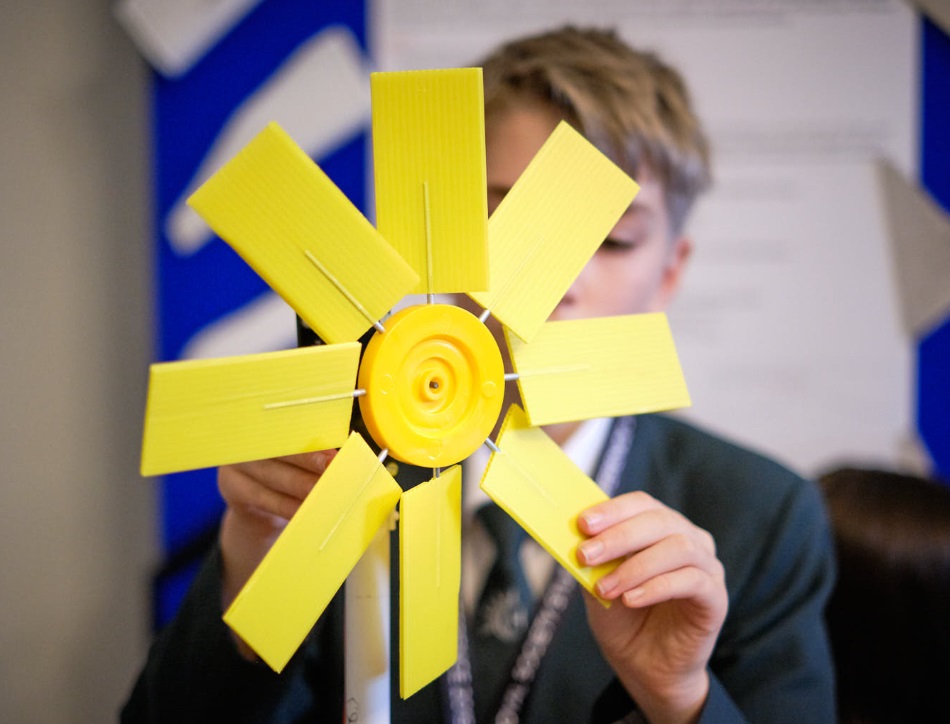Eligibility and judging criteria
Eligibility
Eligibility checks are undertaken after Stage 1 in the application process has been submitted, so please ensure you read the eligibility criteria carefully.
The Royal Society’s Partnership Grants scheme funds schools and colleges up to £3,000 to support the development of students’ practical STEM skills and careers experience. This is achieved by developing and delivering a long-term investigative STEM project in the classroom.
To be eligible for the Partnership Grant scheme, each project must involve at least two partners:
1) a member of staff from a UK school or college, referred to as the school partner, and 2) a STEM professional from academia or industry, referred to as the STEM partner.
Any member of staff from the school or college can act at the school partner but please note, if the application is successful, it will be this individual who will be the main point of contact for the Royal Society during the running of the project and will be responsible for submitting the required updates and reports.
Applications must be completed online through Flexi-Grant®.
Project eligibility
- The school or college (inclusive of sixth form or further education) must be UK-based (including the Channel Islands and the Isle of Man)
- The students involved in the project must be between 5 and 18 years old. Reception years are eligible if the project is run in conjunction with other age groups
- You must apply with a specific research project rather than a series of independent activities or experiments for a STEM club. Use this project planning guidance document to help you prepare your research project
- The title of the project must be a STEM-related question that the students are attempting to answer by completing their research; it must be specific to the school and cannot be part of a third-party scheme or competition
- If your project includes a 'design and build' aspect (for example, building a car, robots, weather station, etc), make sure there is still a clear investigative element
- The project must run for a minimum of one term (for example, from Christmas to Easter); however, the longer your project lasts, the stronger your application will be
Partner eligibility
- The lead applicant is the school partner who must start the application form
- The lead STEM partner must be someone actively working in a STEM related role in academia or industry and cannot be retired. The lead STEM partner must be above graduate level in a university or research institute, or with appropriate industrial experience
- The lead STEM partner cannot be an individual whose main role is the provision of outreach or education e.g. a public engagement officer, education coordinator or fellow teacher. However, outreach providers working in industry or academia, with a research background, may be considered depending on the project being undertaken
Please note, if your project includes components that rely on conducting experiments involving humans or animals, you will need to show you have thought about the ethics of the project and how any ethical considerations will be dealt with.
Find out more information about the role and eligibility of STEM partners.
Funding
- Funding is paid directly to the school or college (or lead school or college if multiple are involved in the same grant) and must be paid into a school or college bank account
- Funding should predominantly be used to buy equipment
- If a single piece of equipment makes up the majority of the budget, you must clearly justify why the piece is crucial for the success of the project
- Funding of up to £200* can be used to support the STEM partner's travel (*or up to £500 with permission from the Schools Engagement team, in special circumstances and with additional evidence)
- Funding of up to £300 per term can be used to support teacher cover if the success of the project will be compromised without this support. This request should be supported by letter from the head teacher within the application. If the maximum grant is required to fund equipment, then additional funding for cover can be requested over the course of the project
- Funding cannot be used on the following:
- to purchase items directly from the STEM partner and the STEM partner should not make a commercial gain from the project. This is due to conflict of interest
- to take part in third-party schemes, competitions or pre-prepared workshops
- consultancy or advisor fees for scientists, engineers or freelance science communicators
- the purchase of pre-prepared kits (e.g. Lego kits, eco cars or rocket-boats), unless they are to be used in a wider investigation, i.e. they are part of a project which clearly demonstrates a sound use of scientific methodology
- normal running costs or equipment of a science/technology department
- teachers based in educational establishments outside the UK
- projects that take place outside the UK or travel overseas
Judging criteria
All submitted Stage 2 applications are reviewed by at least two members of the Partnership Grants Allocating Panel.
The following criteria are used by the judges during the review process. Please note that the STEM partner’s involvement and the investigative element of the project are double weighted during the judging process due to their importance.
| Area | Judging criteria |
|---|---|
| Project title | Must be a question that the students are attempting to answer by completing the project. |
| STEM partner involvement | The judges will be looking for sustained, meaningful interaction between the STEM partner(s) and students throughout the lifetime of the project. The STEM partner's support should be predominantly in-person and can be supplemented by online support.
This element is double weighted during the judging process. |
| Investigative element | It needs to be clear to the judges that your investigations link to your project title and that students will be using the scientific method. The judges will also want to see that there is opportunity for your students to develop new skills, including data analysis.
This element is double weighted during the judging process. |
| Equipment and materials | The judging panel will be checking that your items link to your project and it is important that you make sure the items are clearly justified. Funding should not be used to purchase items normally covered by school budgets. The judges will also want to see that proposed items represent best value for money, |
| Involvement and selection of students | It is crucial that the judges can see how you have selected your students, taking into account diversity characteristics such as gender diversity and ethnicity. The judges will want to see a high number of students involved or if that is not feasible and your project will involve a small group there needs to be a clear plan to communicate the work to the wider school community. |
| Project legacy | Partnership Grant projects should be sustainable. Therefore, the judges will want to see that there are long-term benefits to your students and wider school community in terms of teaching and learning of STEM subjects. The Panel will look if there are plans to repeat or extend your project. |
Eligibility FAQ’s
The questions below are commonly asked by prospective applicants and the answers provide useful hints and tips for your application. Please also review the guidance pages regarding the application, partnership and guidance to support SEND as you write your application. Don’t forget that draft applications can be sent to the Schools Engagement team for review before you submit.






